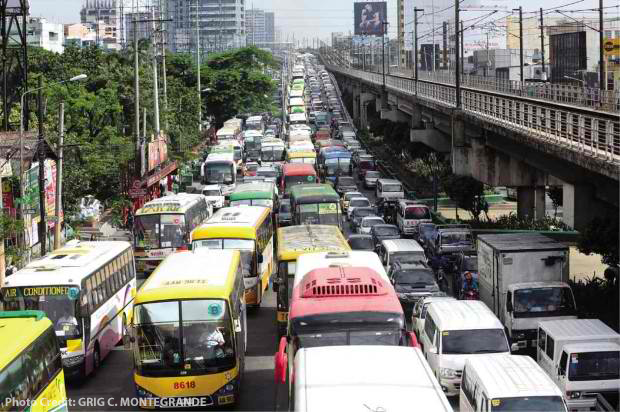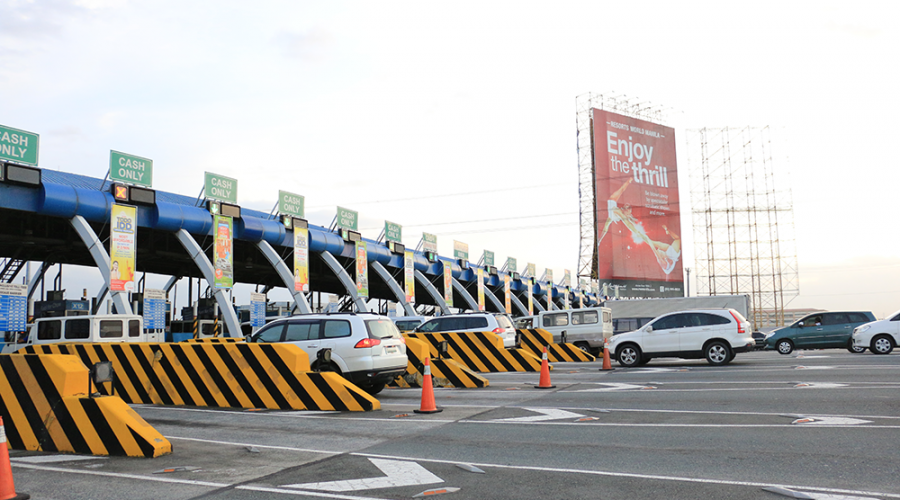Bida Ka!: Solusyon sa trapiko
Mga Bida, noong Lunes, humarap na sa pagdinig ng Senado ukol sa matinding problema ng trapiko sa Metro Manila ang matataas na opisyal ng pamahalaan na nagtutulung-tulong para resolbahin ito.
Kabilang sa mga dumalo sa pagdinig sina Secretary to the Cabinet Rene Almendras, Transportation Secretary Jun Abaya at Metro Manila Development Authority (MMDA) chairman Francis Tolentino.
Sa kanilang pagdalo, naging masigla ang diskusyon sa ikalawang pagdinig at naging detalyado ang iprinisintang short-term at long-term na programa at proyekto para maresolba ang trapiko sa Kamaynilaan.
***
Sa mga unang araw, tinutukan ng task force ang pagbalik ng disiplina at sa mga lansangan, gaya ng paggamit ng yellow lane, pagsakay at pagbaba ng mga pasahero sa tamang lugar at pag-alis ng illegal vendor sa mga sidewalk at iba pang sagabal sa trapiko.
Ang mga hakbang na ito ay planong suportahan ng task force ng iba’t ibang pangmaikliang programa upang mabigyan ng agarang solusyon ang sitwasyon ng trapiko sa kahabaan ng EDSA.
Una sa mga programang pinag-aaralan ng task force ay ang staggered work hours upang hindi magsabay-sabay ang pag-uwi ng mga empleyado at paglalagay ng espesyal na linya sa EDSA para sa mga sasakyang may lulang tatlong katao pataas.
Plano rin ng task force na maglagay ng Mabuhay lanes na gagamitin sa biyahe ng 20 pinuno ng iba’t ibang bansa sa APEC Summit. Ito rin ay magsisilbing alternatibong ruta sa pamamasyal ng ating mga kababayan sa Kapaskuhan.
Sa mga susunod na linggo, isa-isang ipatutupad ng task force ang mga programang ito upang malaman kung ito’y epektibo o hindi.
***
Noong Martes naman, mga Bida, muling ipinatupad ng MMDA ang truck ban sa Kamaynilaan, kung saan bawal bumiyahe ang mga truck mula alas-sais hanggang alas-10:00 ng umaga at alas-singko hanggang alas-10:00 ng gabi, maliban sa ruta palabas sa hilagang bahagi ng bansa.
Paliwanag ni Chairman Tolentino ay muli nilang ipinatupad ang regulasyon na nabuo noon pang 1978 dahil naresolba na ang problema sa port congestion.
Ang pagpapatupad sa truck ban ay bahagi rin ng paghahanda para sa seguridad ng mga delegado sa APEC Summit at mapaluwag ang EDSA na nadagdagan ng sasakyan dahil sa ginagawang Skyway 3 na bumabagtas sa ilang malalaking kalye sa Kamaynilaan.
***
Batay sa pag-aaral, ang pagdami ng tao at mga sasakyan sa Kamaynilaan ay larawan ng isang maunlad na ekonomiya. Ngunit kasabay ng paglagong ito, hindi dapat hayaan na mauwi ito sa trapiko at pagsisikip ng Metro Manila.
Kaya tinututukan na rin ng task force ang mas madaling pagbiyahe ng mga commuter sa pamamagitan ng pagpapabilis sa high-occupancy vehicles gaya ng bus at tren.
Kung ating titingnan, ang isang bus na dalawang kotse ang haba ay kayang magsakay hanggang animnapung katao. Wala pang sampu ang kayang isakay ng dalawang kotse na may katumbas na espasyo gaya ng isang bus.
Mababawasan ang mga kotse sa kalsada kung mayroon tayong maayos at mabilis na mass transport system. Kung mapapaganda ang serbisyo ng MRT sa susunod na mga buwan, mas marami ang mahihikayat na sumakay rito.
Sa gitna ng mga plano’t programang ito, kailangan ding gawin ng mga motorista at pasahero ang kanilang bahagi, gaya ng disiplina sa pagmamaneho at mahabang pasensiya ng lahat.
Tandaan, ang pagsunod sa batas ay obligasyon ng lahat at hindi ng iilan. Sabi nga ng HPG, isa sa mga dahilan ng trapiko ay ang katigasan ng ulo ng mga motorista.
***
Nagpapasalamat tayo sa HPG, MMDA, kay Secretary Almendras at iba pang mga ahensiya ng pamahalaan sa kanilang pagkakaisa at pagsisikap na mapaganda ang daloy ng trapiko sa EDSA.
Ngunit pinakamahalaga pa rin ang suporta ng taumbayan sa ikatatagumpay ng mga programang inilatag ng task force.
Ilang beses na nating napatunayan na kapag nagsama-sama at nagkaisa ang lahat, tiyak ang tagumpay ng isang bagay at mas madaling ayusin ang gusot at problema.
Kaya bigyan natin ng pagkakataon ang pamahalaan na ipatupad ang mga programang ito, dahil ito rin ay para sa ating kapakinabangan kapag nagtagumpay!
First Published on Abante Online


Recent Comments